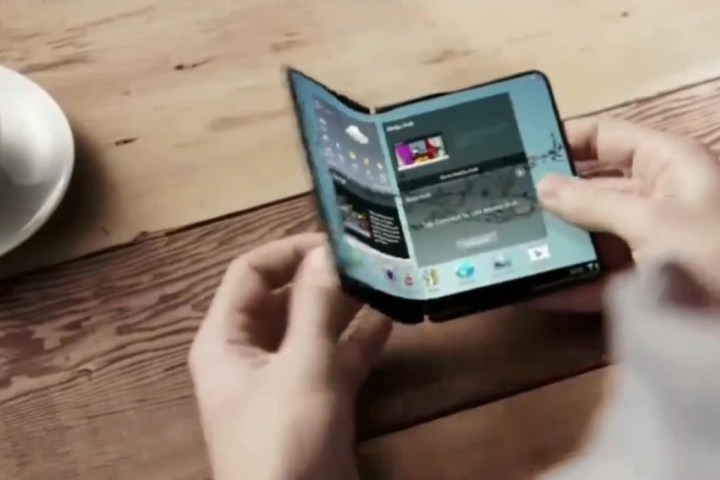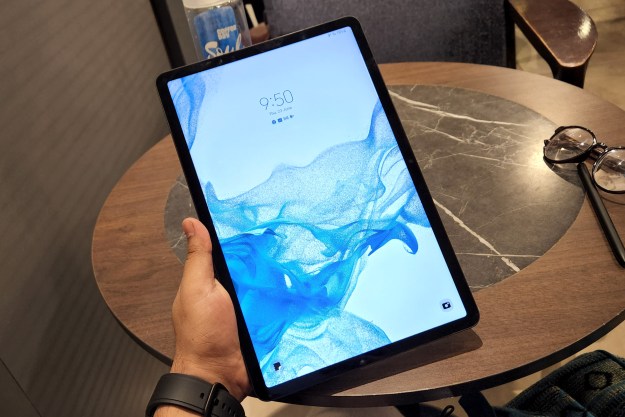
Fast-forward to 2016 and there have already been proof-of-concept demonstrations and reports of mass production. Still, a commercial product is yet to be seen. But according to a recent report, and recent developments in the mobile market, all of this could change next year.
According to the report, an industry source revealed Samsung’s related plans on March 31. The device will essentially be a 7-inch tablet if opened, but fold it and it becomes a 5-inch smartphone. Foldable hardware available commercially has existed in the past, but it’s been clunky at best. Users could have two separate screens that could be folded together to display only one screen. Unfolded, there could be metal separating the two screens, making for an unpleasant viewing experience. Examples of this include the Kyocera Echo and Sony Xperia Tablet P.

The source also says that a working prototype of the display is already finished. Samsung is said to have plans to mass produce the foldable display by the end of this year, and will begin selling the device next year.
Samsung Electronics and Samsung Display, the division responsible for the production and development of Samsung displays, is said to have partnered with domestic and foreign businesses to develop the device.
Even given the uncertainty that surrounds information provided by an anonymous source, there are still reasons to believe these displays could be commercialized next year. Most obvious of all is that Samsung has invested even more in flexible OLED production facilities. And LG has expressed a desire to let their own flexible displays out on the market in 2017, something Samsung isn’t likely to idly stand by and observe. Another indication is the company’s recent patent filing for a flexible display that could be rolled out to increase the viewing size. It seems the company is looking for viable design solutions that will allow consumers to put the devices into their pockets. Nobody’s looking for a need to iron out the folds on their smartphones.
The mobile tech industry is certainly at a threshold, with many manufacturers opting for resolutions that top out at 1080p. At this point only a limited selection of phones feature displays at QuadHD, and even fewer target 4K. Delayed innovation will result in reduced incentive to invest in new phones, and the industry is hoping that foldable displays will offer consumers enough of a reason to go forth and buy. Combined with Virtual Reality (VR), it’s possible that mobiles will be able to provide a high enough Field-of-View (FoV) to make sure consumers don’t feel like they’re wearing goggles during their virtual experiences.
Editors' Recommendations
- Samsung may be working on an incredible new smartwatch design
- Does the Samsung Galaxy S24 Ultra have a curved screen?
- Samsung may have a price shocker for the Galaxy S24 series
- Samsung may have just killed the Galaxy S10
- You may want to think twice about buying a Samsung or Pixel phone


